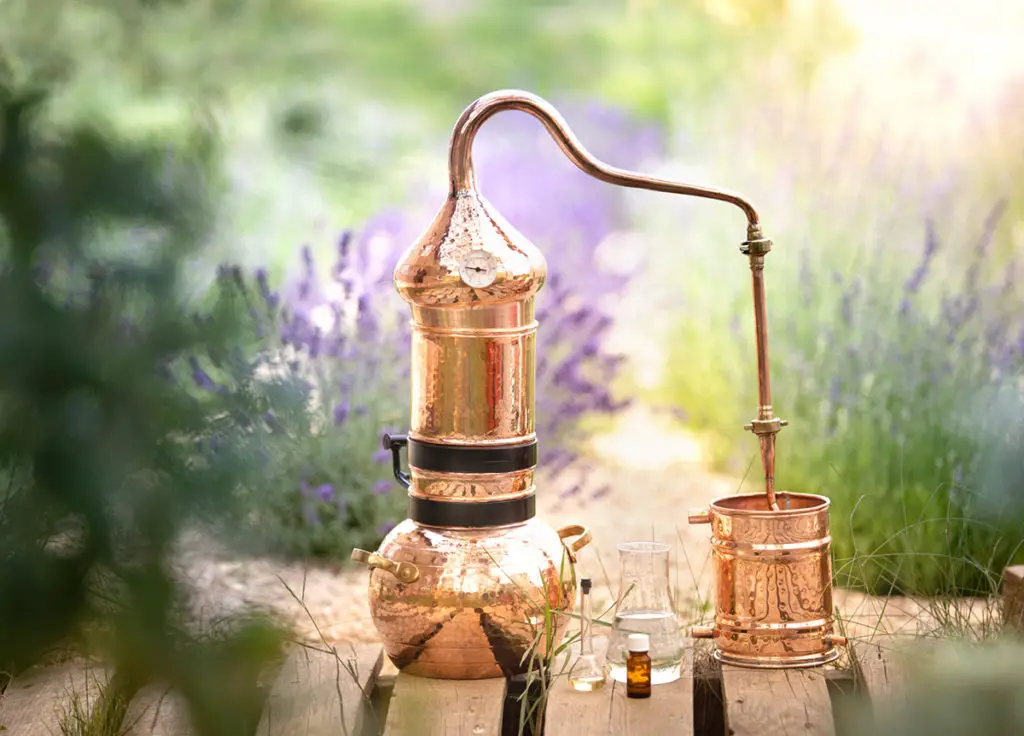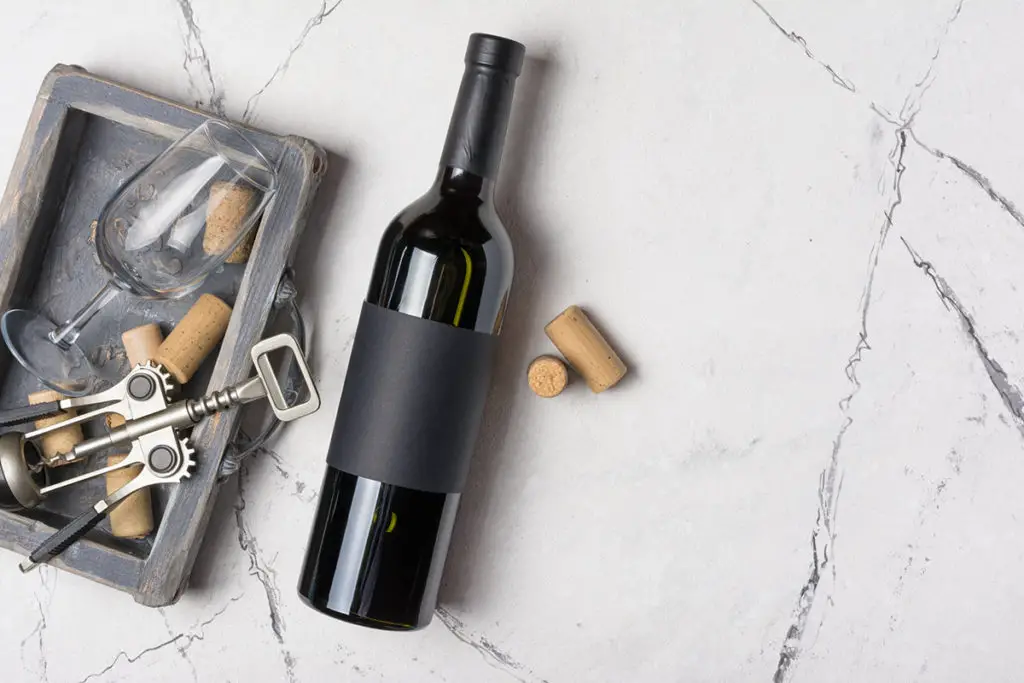If you’ve dove into the world of homebrewing wine, inevitably, you’ll run into the idea of making a fortified wine. These can be difficult to make at home, but doing it well will give you superior flavor and control over the process.
Here’s how you can distill wine at home:
- Check local regulations for distilling wine.
- Choose the wine you’re going to distill.
- Set up your still.
- Heat the wine.
- Dispose of the dangerous distillate.
- Clean your still.
Distilling wine at home is a bit complicated, but have no fear. This article will give you all the tools you need to distill wine at home properly.
1. Check Local Regulations for Distilling Wine
The first thing you need to do is check the local and federal distilling laws, even if you aren’t producing with the intent to sell.
Distilling is heavily regulated worldwide, and the United States is no different. Every state will have its own unique laws about the process, and there may even be local city regulations as well. If you don’t adhere to them, you could have federal felony charges.
Most states require a certain level of licensing to possess a still, so you need to check on that before you even gather your essential ingredients. You may need to pay a substantial amount of money to register your still and make sure everything is above board.
This is the main reason there aren’t too many small distilleries. It can be costly to register stills and keep everything aboveboard. This can be more than more hobbyists are willing to pay, even if they aren’t producing for commercial reasons.
The best place to check for this information is on your state’s Alcoholic Beverage Control website. They will have all the forms you need to complete the process and answer your frequently asked questions.
Some states will require stills over a specific size or require all stills to be registered, no matter the size. It varies widely, but you need to follow up on this.

Gold Medal Wine Club - Boutique, award-winning wines delivered monthly! → Choose Your Wines
2. Figure Out Your End Product & Collect Ingredients (Distilling Wine)
Now that your paperwork is all in order, you can get to the fun part of distilling your wine! The next step is to figure out what your end product should be.
The specific wine that you choose can impact what your final product is. Similarly, what effect you want to make will impact what wine you choose to distill, in both the flavor and the process. Two main products produced by distilling wine are brandy and fortified wines, like port.
Brandy
If you’re going to distill brandy, you need to find a good base wine to create your brandy. This is the most crucial step, and you need to pick carefully.
Base wines are a little bit different from your typical table wine. They’re usually more acidic than table wines and lower yeast concentrations. However, they can have a significant impact on your final product.
Base wines are typically made with grapes harvested earlier in the growing process. Depending on the final product, you need to look at the grape that the base wine was made with.
Port and Other Fortified Wines
If you’d like to get ready to make a port wine from scratch, it’s very similar to the brandy process. You might even need to make brandy before you start making the port wine.
Port wine is made when a grape distillate is added to a wine to give it a richer flavor and more robust alcohol content. The distillate will give this wine a higher alcohol content and its trademark warm feeling.
While you don’t put the port wine directly into the still, you need to make the components in it. Some wineries will make a blend in this process, but others will use the exact base wine for the port and the distillate they’re producing.
3. Set Up Your Wine Still
Now that you have all of your ingredients, you need to set up your still and prepare for the distilling process. This can be pretty complicated, but once you get the hang of it, you’ll be setting your still up and taking it down in no time at all.
The best way to learn how to set up your still is by doing and following instructions. While some stills come with instruction manuals, others are sold without them. What’s a distiller supposed to do in those situations?
In this modern Internet age, you can find any answer you want on the Internet. They come in text, video, or audio format, like a podcast. There are so many great how-to videos out there about how to set up your still if you’re lost.
One example is from YouTuber bigclivedotcom. He walks the viewer through how he distilled a bottle of Barefoot wine. This video does have a joking and more playful tone but still has impressive information about distilling wine:
He’s also great if you enjoy an experimental look at homebrewing.
Another example is from Martin van Gijn, also on YouTube. He walks you through the whole process of how to prepare a still for distilling and is more serious than the previous example:
As mentioned above, videos aren’t the only option you have. There are so many articles like this one that go through every step for the different stills.
4. Heat the Wine
Your next step is to heat the wine carefully. Don’t increase the heat too fast because wine is quite flammable and dangerous if it gets too hot. Bringing your wine to heat too quickly can also cause pressurization issues across the board.
The heating step is crucial since distillation requires evaporation to get rid of the extra water in the alcohol. You end up with a much stronger final product with a denser flavor.
However, to preserve the flavor, you can’t heat the wine too high. Once it reaches a high enough temperature, molecules in the wine break down and are lost in the base. This will ruin your distillate.
The best temperature to heat your wine is around 173 °F (78.3 °C). This temperature is hot enough to heat the alcohol and separate it but not hot enough to boil the water out of the wine.
5. Dispose of the Dangerous Distillate
Disposal is the most critical step of this process. While it’s essential to get the still correctly set up, there’s still less risk to your safety than drinking outright poisonous distillate.
Once you’ve gotten rid of the dangerous distillate, you can harvest the safe to consume distillate. Be careful, though, since the last bits of the process are unpleasant and should be avoided.
You should collect the distillate and dispose of it. Check your state and local regulations about disposing of hazardous materials. There might be special disposal centers near you, or they might have specific clean-up events that you can drop the distillate off at.
However, you might have to store the distillate for a while. It would help if you had a spot to put these potentially hazardous chemicals. They should be out of children’s reach and not near anything that could hypothetically ignite them.
6. Clean Your Still
Finally, you bottle your distilled product, and there’s the last step: clean up.

Every time you use your still, you need to clean it thoroughly. That means disassembling everything, sanitizing it, reassembling, and then storing it in a safe place. It would be best if you also disposed of any unwanted distillate.
Not cleaning your still can have significant consequences. Not only can bacteria form, but not washing your still can damage it and stop you from using it in the future. Rust and blemishes can quickly lead to larger cracks, holes, and other damages.
Cleaning your still doesn’t have to be too much work. It would be best to use a simple cleaner that is food safe, so you don’t accidentally poison yourself. Hot water is also crucial, and you should let it dry in a clean place.
Final Thoughts
Distilling wine at home is a bit complicated, but you won’t have to fear with the help of this guide. You have to have the legal permitting, know your final product, select the right ingredients, set up your still, heat the wine, and dispose of the dangerous distillate. Finally, you need to clean the whole still and prep it for storage.
